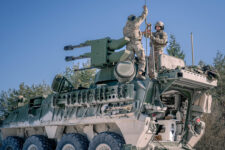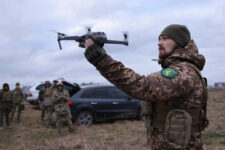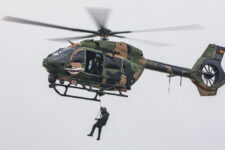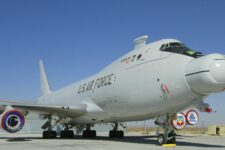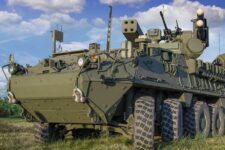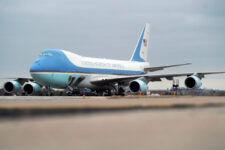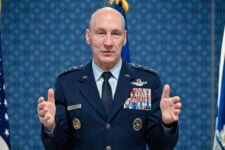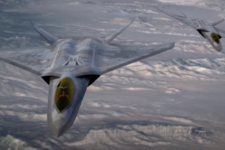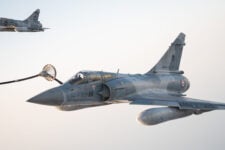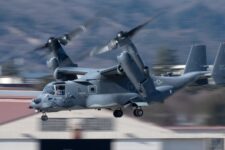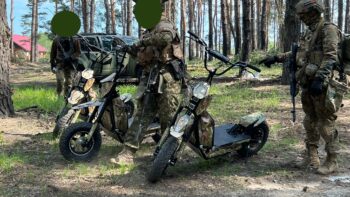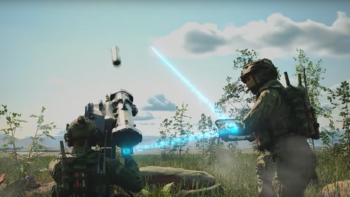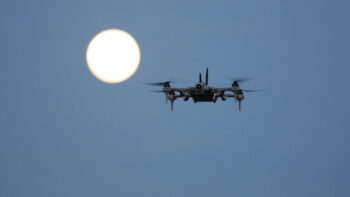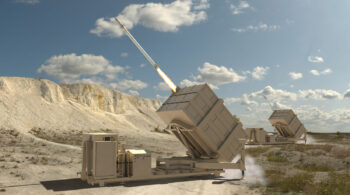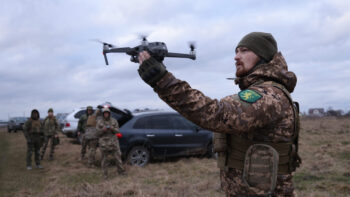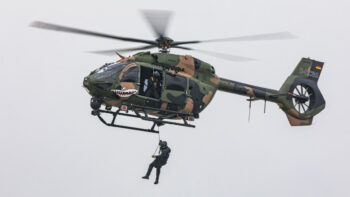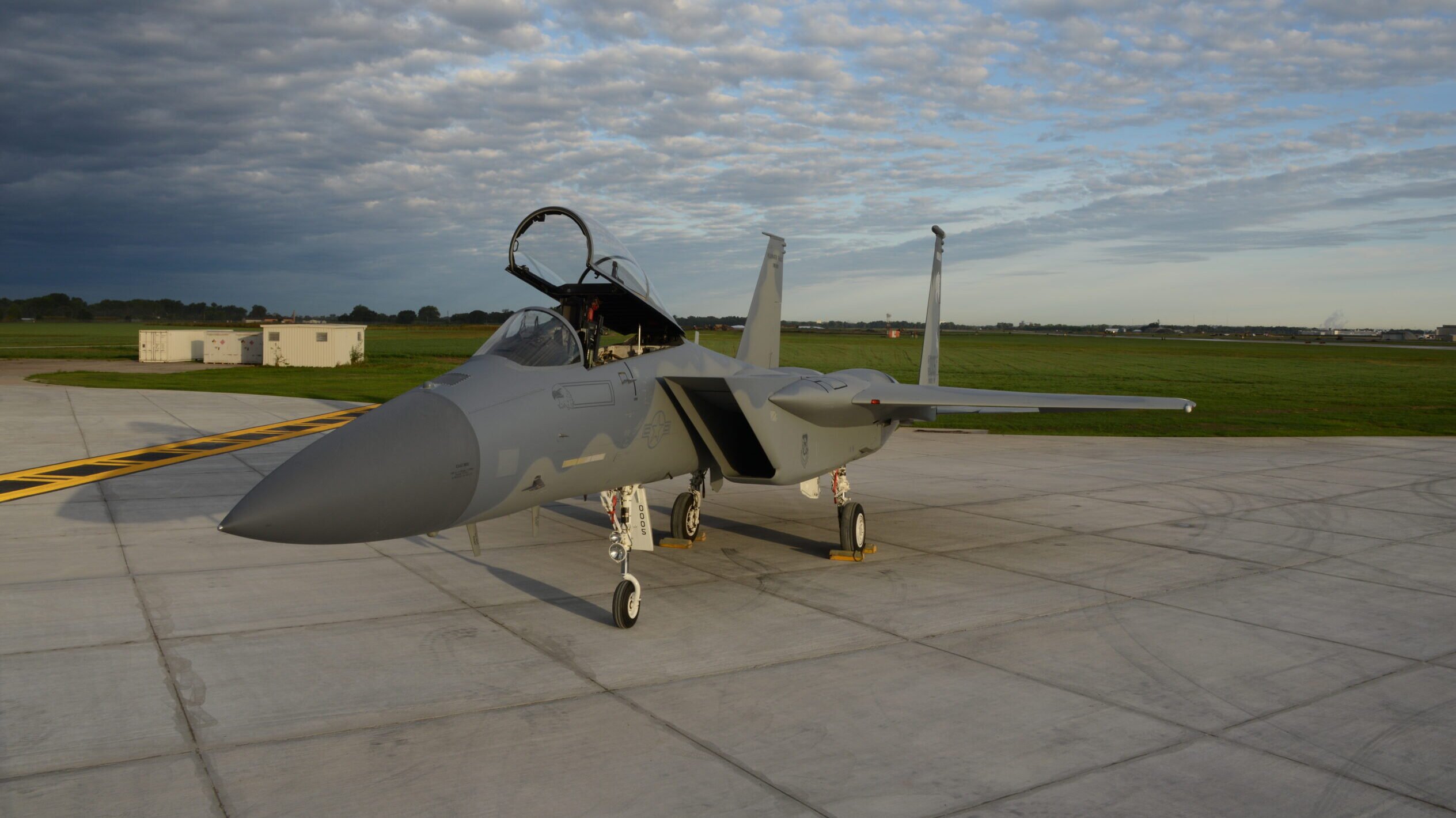
A U.S. Air Force F-15C Eagle from the Oregon Air National Guard’s 173rd Fighter Wing, based in Klamath Falls, Oregon is parked outside the Air National Guard paint facility in Sioux City, Iowa on September 26, 2019.
(U.S. Air National Guard photo by Senior Master Sgt. Vincent De Groot)
WASHINGTON — The Air Force’s plans to divest hundreds of fighter jets in the coming years threatens to diminish the National Guard’s force structure, the kind of move that in the past has caused a major rift between the active and reserve component of the military and required Congress to step in.
But despite over 600 fighter cuts spelled out in the Air Force’s most recent five-year spending plan, National Guard chief Gen. Daniel Hokanson seems to believe a major fight can be avoided, thanks to both solid communication with Air Force leaders and, potentially, some help from Congress.
Speaking to Breaking Defense last month in his office at the Pentagon, Hokanson acknowledged past challenges, but said with the current service leadership “There’s always an avenue of communication” with Air Force Secretary Frank Kendall and his team.
“You know, great respect for Secretary Kendall, anytime I need to talk to him, we work out schedules, and he’ll always hear me out,” Hokanson said in a July 20 interview, adding that the same is true for Air Force Chief of Staff Gen. CQ Brown and “whoever his successor is.” (The following week, President Joe Biden tapped Air Force Gen. David Allvin as the next Air Force chief of staff, who would take over for Brown after he was nominated as the next chair of the Joint Chiefs of Staff.)
The steep number of retirements are being sought for two main reasons, officials say. The first is that the service’s aging aircraft, like A-10s and older F-15s, probably wouldn’t fare well against a peer adversary. The second is that maintaining the current fleet is expensive, and junking older jets frees up dollars to spend on procurement and R&D for newer weapon systems.
Because the Guard tends to have the older aircraft in inventory, many planned retirements are poised to disproportionally impact Guard units. But Hokanson said he’d seek to maintain the Guard’s current number of fighter squadrons, cautioning that the United States needs them.
“We have 25 fighter squadrons in the Guard right now. And when I look at the global demand, my personal view is I think we need to keep all 25 of those. I think our nation needs that capability,” he said.
Hokanson acknowledged calls to retire the A-10 and echoed remarks from Kendall about the need to retain similar missions for squadrons impacted by cuts. As F-35s and F-15EXs are delivered, he said the Guard is working with the Air Force to “cascade the planes that are still good into Guard units” until all that exists are F-35s, F-15EXs and newer F-16s. He then added that “if Congress ever added a few extra fighter jets every year, we could get there faster.”
After warming up to the Air Force’s plans to retire the A-10 fleet, some lawmakers are still skeptical of the service’s overarching divestment strategy. Under its authorization language, the House Armed Services Committee would prevent the Air Force from retiring older F-22 Raptors that service officials emphasize are not combat coded. And Rep. Don Bacon, a Nebraska Republican and retired one-star Air Force general, has proposed a mandate to keep a minimum of 25 Guard fighter squadrons.
Mark Cancian, a senior advisor for the international security program at the Center for Strategic & International Studies, said debates over force structure cuts are nothing new, pointing to the previous congressional commission [PDF] that straightened out disagreements between the Air Force and reserve components while highlighting previous differences among the Army and Guard as well. However, he noted some key distinctions with current proposals.
“I think what’s a little different is that the Air Force has the strategy behind it,” he said. “If you believe that we should structure our forces for high-end, peer combat, particularly with China, that would incline you to get rid of a lot of the older aircraft.”
However, Cancian said he would favor the United States maintaining a “global capability,” including by retaining older jets for conflict in less contested environments. “I think it is possible to moderate some of the cuts,” he replied when asked where the Air Force could find the budget space to hold on to older platforms, suggesting that some procurement of jets like the F-35 and certain R&D efforts that “won’t see the light of day” could be slashed.
Keeping the current force structure together would be an exceedingly difficult task even with stopgap measures like purchasing a few extra jets every year, he observed, since “once the structure goes away, it almost never comes back because aircraft are so expensive.” On top of that, pilots will need to be trained, and fully recapitalizing a squadron would take years.
And while Hokanson’s suggestion of adding a few jets annually is a “nice nod towards the reserve components… substantively, it just won’t get you there,” he said.
In the end, Cancian said some level of strained relations between the Guard and active duty has and always will exist, which officials will need to consistently navigate.
“This is not a problem that can be solved. It’s a challenge that has to be managed on an ongoing basis,” he said. “So, the fact that there may be tensions, that’s normal. What the leadership has to do is figure out ways to manage it.”




